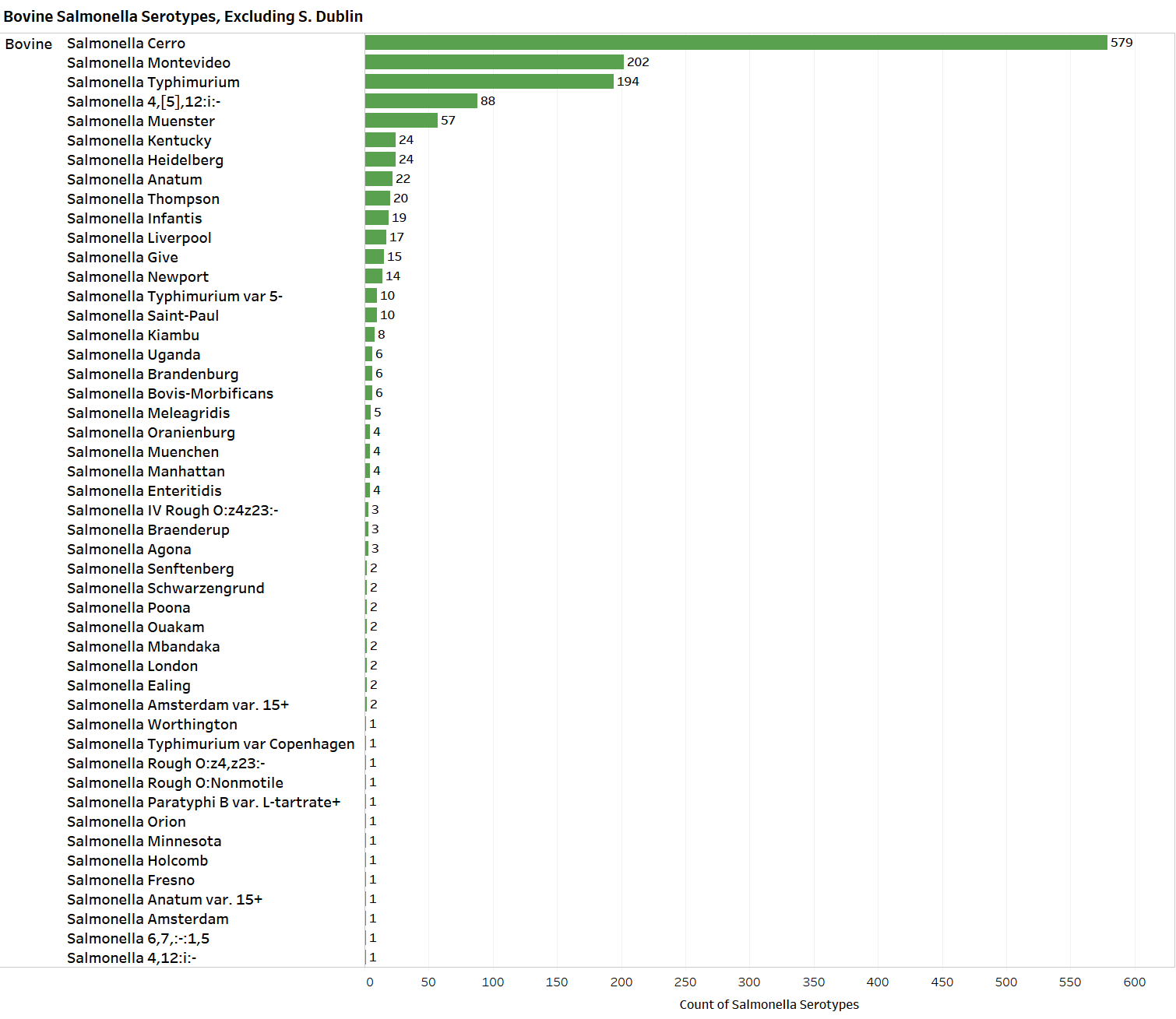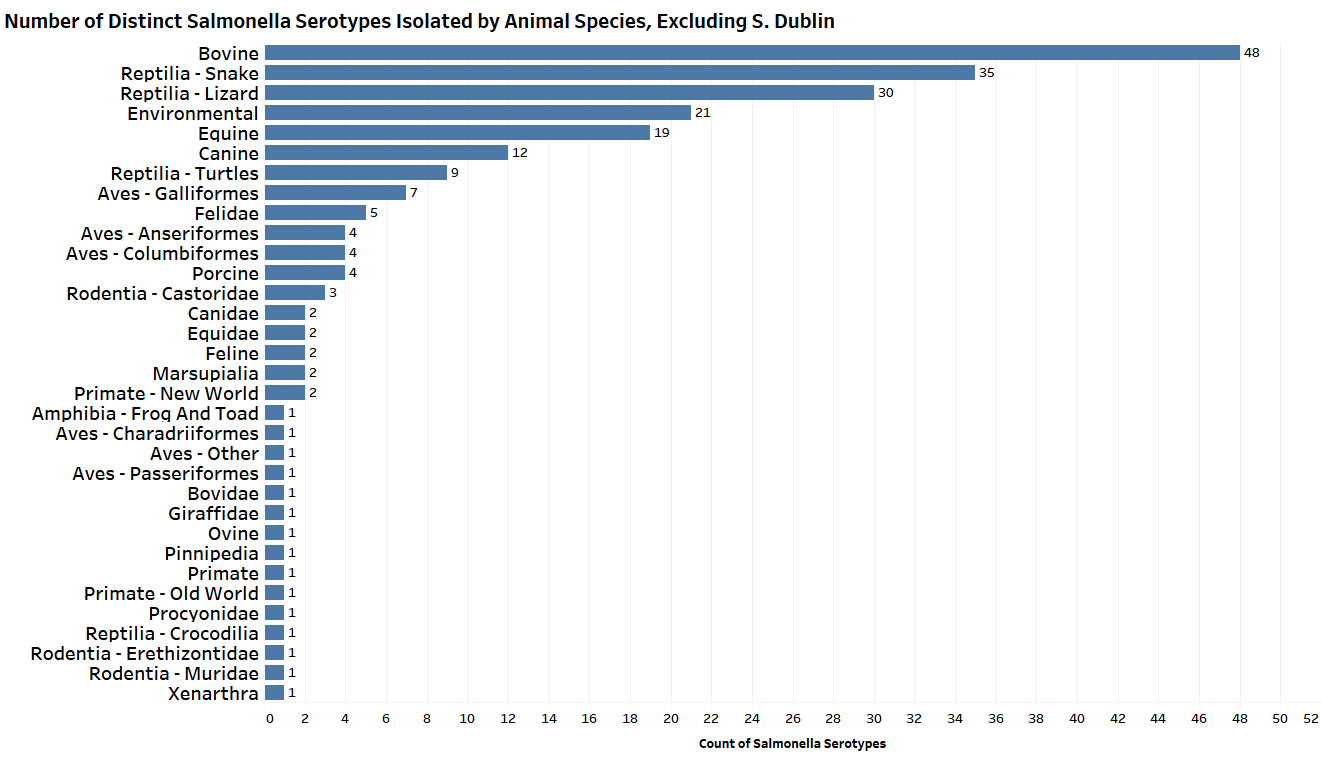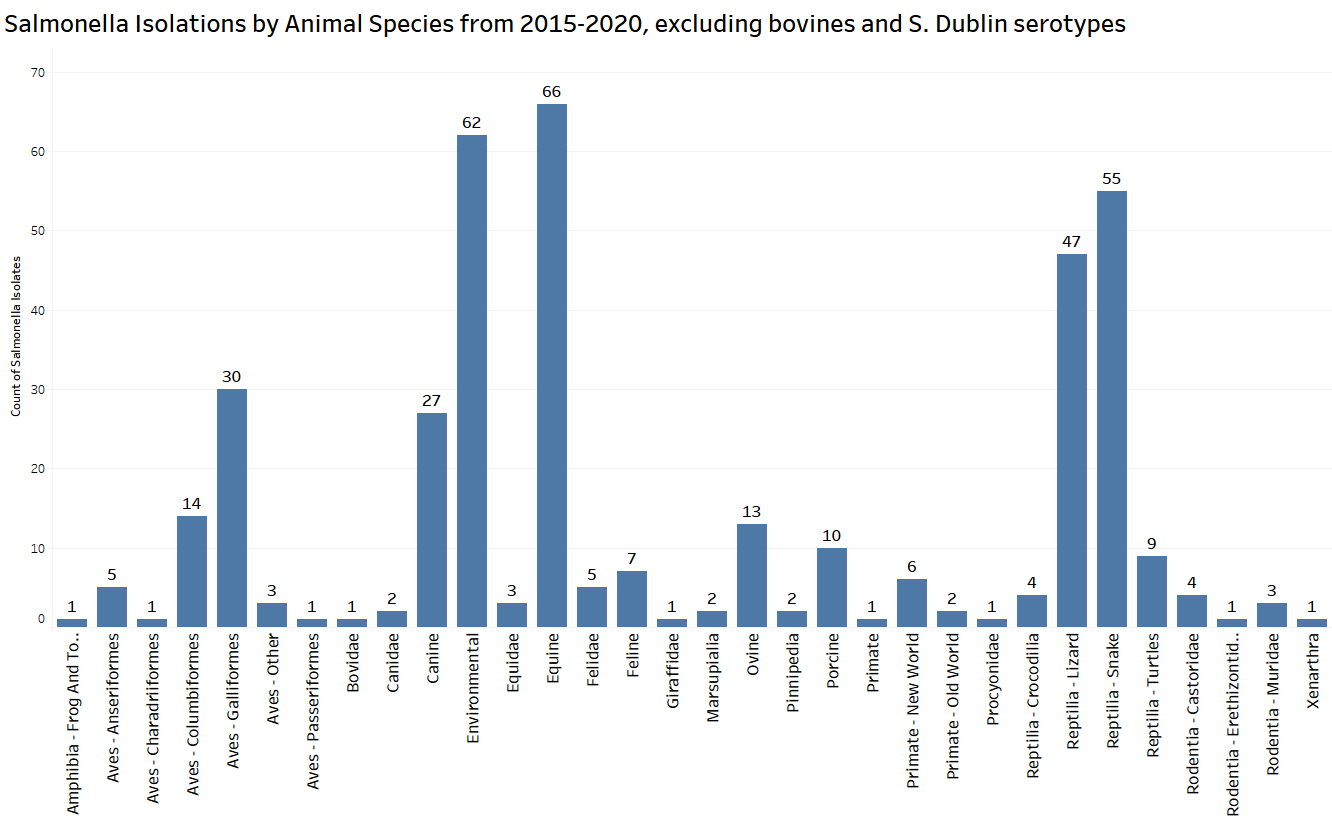Salmonella enterica
In a recent analysis of Salmonella enterica culture results (excluding the bovine host-adapted serotype S. Dublin) at the Animal Health Diagnostic Center over the past 5 years, 1,770 isolates were identified across 32 animal species and environmental samples. Bovine samples had the largest numbers with 1,380 Salmonella isolates and 48 different serotypes (Graph 1). Equine samples had the second-highest number, with 66 isolates, and environmental samples were the third highest with 62 isolates (Graph 2). Snake and lizard samples yielded the second highest number of Salmonella serotypes, after bovine samples (Graph 3).
The majority of the 1,770 salmonella isolates were from feces, with approximately 300 non-enteric isolates. Of the non-enteric samples, Salmonella was most commonly cultured from the environment (67), lung (21) and blood (10). Salmonella isolates from enteric sources and the environment are expected due to its primary nature as a gastrointestinal pathogen that is spread through feces. However, isolation of Salmonella from the blood or blood-rich organs such as lung, kidney, spleen, and lymph nodes are suggestive of septicemia.
Graph 1:

Graph 2:
Graph 3:




